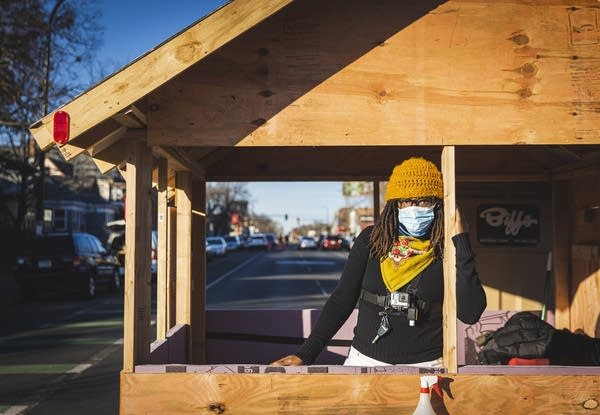From ‘schoolmarm’ to sentry: Mpls. teacher responds to George Floyd killing

At the intersection of Chicago Avenue and 39th Street, Marcia Howard stands watch Nov. 28 from inside a shack built by neighborhood residents to guard the south barricade entrance to George Floyd's Square. The barricade also includes a gate made out of a bike rack on casters to allows cars to come and go.
Ben Hovland for MPR News
Go Deeper.
Create an account or log in to save stories.
Like this?
Thanks for liking this story! We have added it to a list of your favorite stories.


